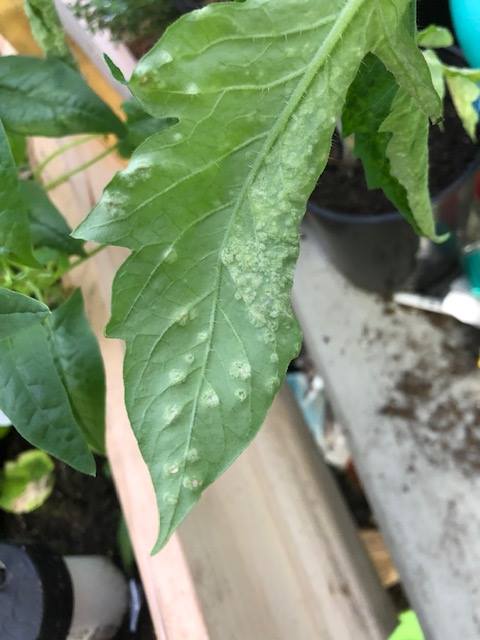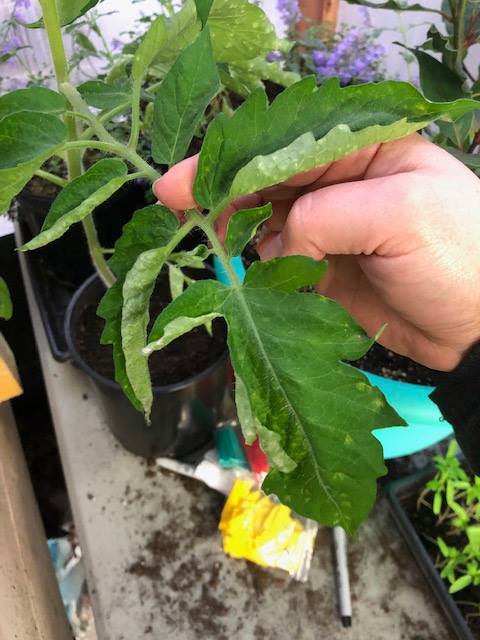
Edema
disorder

These otherwise healthy tomato plants in the photo have 'edema'. The warty bumps on the underside of the leaves are not a disease but a physiological disorder. This happens when the plant takes up water faster than it can use it or transpire it through the pores on the underside of the leaves called stomata. Too much water and pressure builds up inside individual leaf cells causing them to blister and then burst. The dead cells resemble a bump or blister, primarily on the undersides of leaves. This can happen when soils are water-logged, in high humidity and cool temperatures.
This disorder can happen to any broad leafed plant. In indoor or greenhouse settings, houseplants (especially succulents and ivy geraniums) or transplants such as tomatoes and peppers are prone. In outdoor settings, any plant including trees, shrubs, fruits or vegetables such as cabbage, cauliflower and broccoli growing in waterlogged soils are also prone. This happens more frequently when there are sustained rain events or overland flooding.
The bumps may be large or small and may turn white, brown or tan and become corky. The corky spots can resemble spider mite or thrips damage. In trees and shrubs, the corky spots can be mistaken for rust diseases. In either case, examine of the undersides of leaves using a magnifying lens to rule out these other causes.
Severely affected leaves may be distorted, turn yellow and fall off. However, mildly affected plants can recover from edema and will eventually put on healthy new growth.
Control:
- Reduce watering and let the plants dry out slightly between watering.
- Avoid over-fertilizing.
- Put a fan on the plants at a gentle setting to improve air circulation indoors or in a greenhouse.
- Increase temperature if possible.
- If vegetables happen to have flowers or fruit, remove them as the fruit will taste bitter if left to mature. The plant will produce more flowers and they should be fine.
Source:
Costello, L. R., Perry, E. J., Matheny, N. P., Perry, J. M., Geisel, P. M. (2003). Abiotic disorders of landscape plants: A diagnostic guide. Oakland, CA: University of California, Agriculture and Natural Resources.

